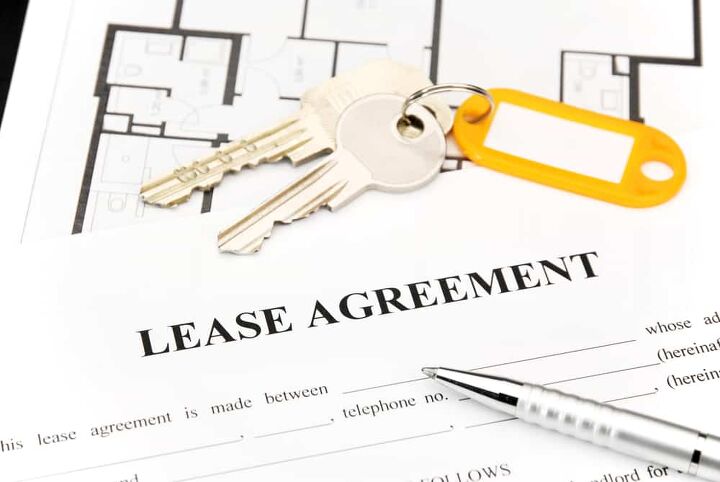Can You Remove Someone From a Lease Without Consent?

There are times where the renter/landlord relationship can an interesting one. In most cases, tenants sign their lease and rarely have to deal with their landlord. In other cases, a multitude of issues can arise that can complicate the relationship.
Someone can be removed from the lease without their consent if they violated any of the terms or agreements, including non-payment. However, if terms have not been violated, you cannot remove anyone from the lease until the lease agreement expires. You can always try asking the tenants but it can only be with their consent.
In this article we will go over the legalities surrounding removing someone from the lease without their consent, and when it’s okay to do that. Other than that, you’ll need their consent. Let’s get started!
Can You Remove Someone From A Lease Without Consent?
You can’t just remove someone from the lease without their consent. Sort of. If the landlord just up and decides that they do not want someone on their lease anymore, there is nothing that can be done.
That said, there are a number of criteria where the landlord can terminate the lease and evict the tenant. Unless one of those criteria is met, however, there is usually no recourse. That said, there are some workarounds which we will cover further down.
Why Would You Want To Remove Someone From A Lease?
For the most part, the tenant/landlord relationship is an innocuous one. From time to time, however, the relationship can deteriorate.
It can come from either side, really, but the landlord tends to hold the cards unless the tenant is willing to pay to break the lease.
There are a few reasons why you might want to remove someone from a lease. The most common scenario is actually not a landlord/tenant issue, but a squabble between roommates. It usually involves neglecting to pay rent, damaging property, or a variety of issues of that ilk.
When Can A Landlord Terminate A Lease?
It is important to note that there are several clauses within the lease where the tenant can terminate the lease and ultimately evict the tenant. The terms are generally outlined by the landlord, though there are both city and state ordinances that must be followed.
If a tenant stops paying rent, for instance, then the landlord would be able to terminate the lease and evict the tenant.
Typically when a party partakes in illegal activities, like selling drugs, that can be grounds for lease termination as well.
Depending on the property, there may be rules about smoking or pet ownership. For instance, a lease may dictate that there are no dogs allowed. Finding a dog living on the property may be grounds for termination of the lease and eviction.
Potential Workarounds For Leases
As a tenant, forcing a roommate to move out is typically not doable without their consent. So, if there is a contentious relationship between two roommates, there is not a whole lot that can be done about that without an agreement to vacate.
For landlords, there are few situations where removing a tenant from their lease is viable. Aside from terminating the lease as outlined in the previous section, there is one potential workaround and a few suggestions for future leases.
Lease Addendum
Should the landlord want to remove a tenant but doesn’t want to put either themselves or any other tenants through the negative implications, a lease amendment or addendum may be possible.
The amendment could potentially remove the tenant from the lease, but they require the tenant to sign the document.
If the former tenant does not agree with the arrangement, getting them to comply is a potential sticking point. Depending on the situation, it could be suggested that an eviction could be a potential black mark on their record. That could be enough to convince them to sign.
How To Handle Holdover Tenants
There are instances where a lease has ended, the landlord wants the tenant gone, and they simply refuse to leave. In some cases, they may keep paying rent, thinking that it will be enough for them to keep their place on the property.
With holdover tenants, the solution is simple. Stop accepting rent payments from them. Then, begin the process of eviction. The downside is that the eviction process can take quite a long time as the rights of landlord and tenant are quite complicated.
Having to evict someone is rarely easy and is never pleasant. If it is in the best interests of the property and landlord, then it should be considered. Otherwise, discussing the issue with the tenant should be the proper starting place.
Removing A Roommate
We have predominantly focused on the perspective of the landlord, but what happens when things sour between lessees?
The simple fact of the matter is that a roommate cannot force the other party to leave without their consent. As much as we wish it were that easy, it is not.
That said, there are a few options if you have a roommate that you simply cannot stand anymore. These aren’t ideal – you would prefer they leave so that you can maintain your lease, after all. That said, they can work if tensions have become unbearable.
Mend Fences
If you are reading this, chances are that things have become contentious enough with a roommate that it is beyond repair. Given how difficult it is to remove someone from a lease, mending fences may be the best option.
Even if things can be smoothed over so that cohabitating remains a possibility, it allows for the avoidance of an ugly situation. It is a lot easier and more cost-effective than some of the alternative solutions out there.
Break The Lease And Move
Okay, you can’t get your roommate off the lease, but what is stopping you? When relationships sour and living together is no longer possible, there may not be an ideal solution. Instead of wishing and hoping that they would leave, why can’t you?
If things are beyond repair, it may be best for you to break your lease and find a different place to live. That said, it is not as easy as it sounds. Breaking a lease typically comes with a heavy cost (literally). It should be considered a last-ditch effort if there is no salvaging the situation.
Should you decide that breaking the lease is the only option, you are looking at a minimum of 2 months rent in fees. In some cases, that broken lease could show up on your record, making it difficult to find a new apartment.
Suggest They Move Out
Perhaps you don’t want to break the lease yourself but the current situation is untenable. It is possible to suggest they move out, though that likely has been suggested if you are here reading this. While they may not simply agree to move out, there are workarounds.
You could offer to pay the fee for breaking the lease for them. Sure, you are out of that money but you don’t have to worry about a potentially negative remark on your rental history.
When it comes time to move, that could mean the difference between finding a great place and having to settle for whatever is available.
What Do I Do If Tenants Refuse To Leave?
Whether you are a landlord or a roommate, there is likely not a great solution to be had if someone is unwilling to leave. As the landlord, you can look for possible lease violations that would allow for the termination of the lease.
In reality, you take it as a learning experience and plan for the future to ensure that it doesn’t happen again.
As a roommate, none of the options are great. Most of them involve having to break the lease and eat the costs associated with doing so. If you are lucky, those are the only costs. Having to take on a negative remark for your rental history would make matters worse.
What Can Be Done Legally To Remove A Tenant?
For the most part, the experience of removing someone from a lease is just that: an experience. There is rarely anything that can be done legally, forcing the landlord to simply wait out the lease and refuse to renew it.
Things can be particularly complicated when multiple tenants are occupying one space. Part of the efforts to simplify things could be to change the lease structure. Allowing only individual leases is certainly a possibility, but what happens in the event of a couple or another sort of joint lease?
In that instance, it could be a situation where a joint lease is signed – meaning both are treated as a single entity – or there is a master tenant and anyone else is a sub-lessee.
The best solution is to have individual leases so that, should something happen, one party can be removed without having to remove every one.
Final Suggestion
The final suggestion is to be as sure as you can about the situation. For landlords, that means a strict application and vetting process.
For roommates, it means feeling comfortable living with that person. Even in those instances, the potential for strife exists.
Related Articles

Ryan Womeldorf has more than a decade of experience writing. He loves to blog about construction, plumbing, and other home topics. Ryan also loves hockey and a lifelong Buffalo sports fan.
More by Ryan Womeldorf



























